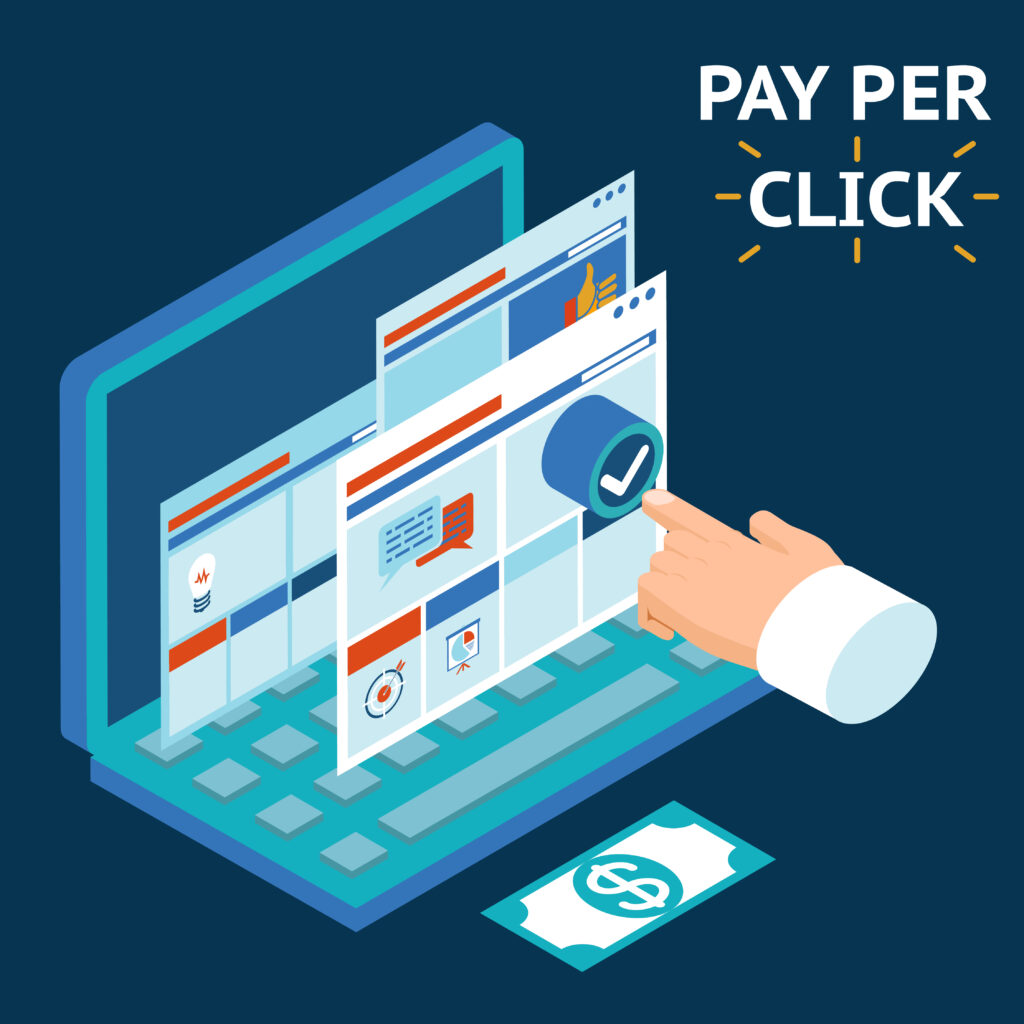Pay-Per-Click Ads: Guide to PPC Advertising in 2025
In the ever-evolving digital landscape of 2025, Pay-Per-Click (PPC) advertising remains a cornerstone for businesses seeking targeted, measurable, and fast results. With new technologies, evolving algorithms, and changing consumer behaviors, mastering PPC advertising is more critical than ever.
This guide, crafted by me, Donato Palmieri, a seasoned marketing consultant, will walk you through everything you need to know — from foundational concepts to advanced strategies — to build high-performing PPC campaigns in 2025

Index:
- What is Pay Per Click advertising?
- Key components of a PPC campaign
- Benefits of Pay Per Click advertising
- PPC strategies and best practices for 2025
- Measuring success: Key PPC metrics
- The future of Pay Per Click advertising
What is Pay Per Click advertising?
Pay-Per-Click (PPC) advertising is a digital marketing model where advertisers pay a fee each time their ad is clicked. Essentially, it’s a way to buy site visits rather than earning them organically.
Ads can appear on search engines, social media platforms, and various websites, with Google Ads and SEM Strategies remaining key components of a successful paid marketing approach.

The core concept remains the same: advertisers bid on specific keywords or audience segments, and when users search for those terms or match the targeting criteria, the ads appear. The advertiser pays only when someone clicks on the ad, making it a cost-effective way to drive traffic and conversions.
Key components of a PPC campaign
Running a successful PPC campaign involves carefully managing multiple elements, each playing a vital role in the campaign’s effectiveness. Let’s break them down:
1. Keywords
Keywords are the foundation of any PPC campaign. They dictate when and where your ads appear. Conducting thorough keyword research using tools like Google Keyword Planner, SEMrush, or Ahrefs helps you identify relevant terms with high intent. In 2025, AI-powered keyword suggestions and voice search optimization are essential to stay ahead of evolving search behaviors.

Pro tip: Don’t just target high-traffic keywords; focus on long-tail keywords with lower competition but higher conversion potential.
2. Ad Copy
Your ad copy is the first impression users get of your brand. Writing compelling, action-oriented copy that speaks directly to the user’s needs is critical. Use emotional triggers, highlight unique selling points (USPs), and always include a clear call-to-action (CTA).

Example: Instead of “Buy Running Shoes,” try “Get Ultra-Comfortable Running Shoes – 20% Off Today!”
3. Landing Pages
A well-designed landing page can make or break your campaign. After clicking an ad, users expect to land on a page that delivers on the ad’s promise. Pages should be visually appealing, mobile-optimized, and feature a clear conversion path with minimal friction.

Key elements: Fast loading times, persuasive headlines, trust signals (like reviews and testimonials), and a prominent CTA.
4. Bid Strategy
Choosing the right bidding strategy aligns your spending with your goals. In 2025, automated bidding powered by machine learning continues to dominate, but manual bidding still offers value for those seeking tighter control.

Common bidding strategies include:
- Cost-Per-Click (CPC)
- Cost-Per-Acquisition (CPA)
- Target ROAS (Return on Ad Spend)
- Maximize Conversions
5. Ad Extensions
Ad extensions enhance your ad’s visibility and provide additional information. Sitelinks, call extensions, location extensions, and lead forms can all improve click-through rates (CTR) and drive more qualified traffic.
6. Audience Targeting
Beyond keywords, audience targeting helps refine who sees your ads. Platforms now offer advanced targeting options, including demographics, interests, behaviors, and even life events.

Retargeting and lookalike audiences remain powerful tools for reconnecting with previous visitors or finding similar potential customers.
7. Performance Tracking and Analytics
Tracking and analyzing campaign performance is crucial for ongoing optimization. Tools like Google Analytics 4, HubSpot, and platform-native dashboards provide valuable insights into user behavior, click patterns, and conversion pathways. Understanding these metrics allows marketers to make data-driven adjustments that enhance results over time.
Benefits of Pay Per Click advertising?
Why should businesses invest in PPC? Let’s break down the core advantages:
- Immediate Results: Unlike SEO, which takes time to gain traction, PPC can drive traffic almost instantly.
- Highly Targeted: Granular targeting options ensure ads reach the right people at the right time.
- Measurable & Trackable: Detailed analytics help advertisers measure performance and make data-driven decisions.
- Budget Flexibility: Set daily or campaign budgets to maintain control over ad spend.
- Enhanced Brand Exposure: Even if users don’t click, they still see the brand’s name and message, contributing to brand awareness.
PPC strategies and best practices for 2025
To maximize PPC success, advertisers must stay agile and adopt evolving best practices. Let’s explore key strategies that can elevate your campaigns.
1. AI-Driven Campaign Management
AI and machine learning are transforming PPC. Platforms now offer smart campaigns that automatically adjust bids, target users, and optimize ad placements. Leveraging AI can save time and improve results.
2. Voice Search Optimization
With the rise of smart speakers and voice assistants, optimizing for voice search is crucial. Focus on conversational, question-based keywords and local SEO to capture voice queries.
3. Visual & Video Ads
Platforms like Instagram, TikTok, and YouTube thrive on visual content. Creating engaging video ads or interactive formats can significantly boost engagement and conversions.
4. A/B Testing
Continuously test different ad variations, headlines, CTAs, and landing pages. Even small tweaks can lead to significant performance improvements.

5. First-Party Data Utilization
With evolving privacy regulations and the decline of third-party cookies, leveraging first-party data is essential. Collect and use customer data responsibly to create personalized and effective ad experiences.
6. Geo-Targeting & Local Ads
For businesses with physical locations, geo-targeting remains invaluable. Show ads to users within a specific radius or region, and use location extensions to guide them to your store.
7. Cross-Platform Campaigns
Consumers don’t stick to one platform, so neither should your campaigns. A unified strategy across Google, Facebook, LinkedIn, and other platforms ensures consistent messaging and expanded reach.
8. Competitor Analysis
Regularly analyze competitor campaigns to identify gaps and opportunities. Tools like SpyFu and SimilarWeb help uncover competitor keywords, ad copy, and landing page strategies — providing valuable insights to refine your approach.
Measuring success: Key PPC metrics
Tracking performance is vital for campaign optimization. Key metrics to monitor include:
- Click-Through Rate (CTR)
- Quality Score (Google Ads)
- Conversion Rate
- Cost Per Conversion (CPC/CPA)
- Return on Ad Spend (ROAS)
- Impression Share
Tracking and analyzing campaign performance is crucial for ongoing optimization. Tools like Google Analytics 4, HubSpot, and platform-native dashboards provide valuable insights into user behavior, click patterns, and conversion pathways. Understanding these metrics allows marketers to make data-driven adjustments that enhance results over time.

This is where Digital Marketing Strategy plays a critical role, helping businesses integrate PPC into a larger, cohesive marketing ecosystem. By aligning PPC efforts with other channels like SEO, content marketing, and social media, companies can create a well-rounded digital presence that amplifies results.
The future of Pay Per Click advertising
As we move further into 2025, PPC advertising will continue evolving. Emerging technologies like augmented reality (AR) ads, blockchain-based ad verification, and deeper AI integration will shape the future landscape. Staying informed and adaptable will be key to maintaining a competitive edge.
By mastering PPC fundamentals, leveraging advanced strategies, and continuously optimizing based on data, businesses can harness the full power of PPC advertising to drive growth, boost visibility, and achieve outstanding results.
Are you ready to supercharge your digital marketing strategy with PPC? Start experimenting, stay agile, and watch your business soar!
Want personalized advice or a tailored PPC strategy? Contact me, let’s chat — and take your advertising to the next level!



